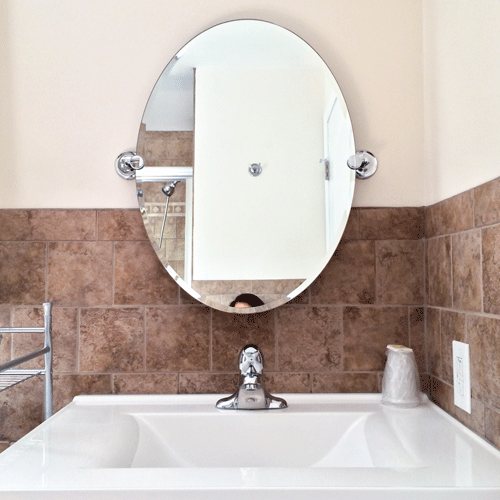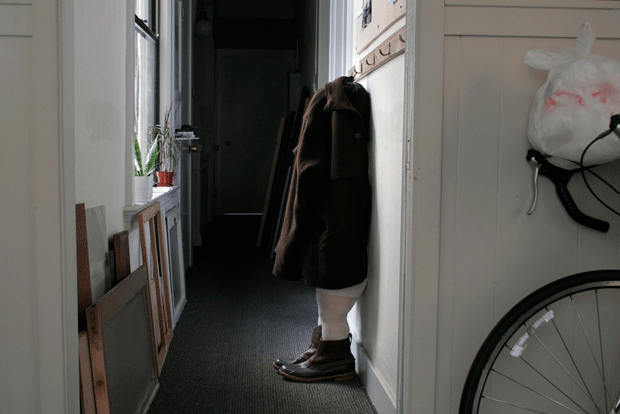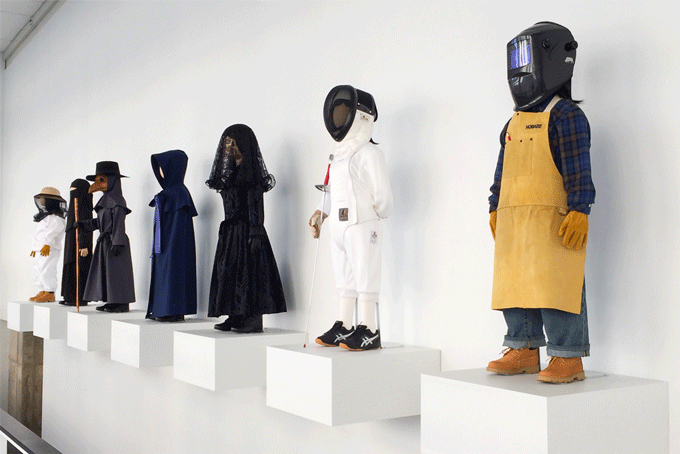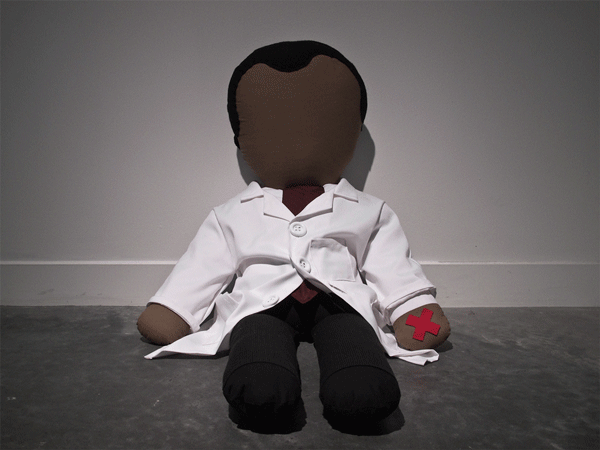Everyone is familiar with the bathroom selfie - the casual photo of one’s own reflection that has become a mainstay in today’s social media landscape. Artist Laura Swanson’s take on the popular self-portrait style, however, is slightly different. Standing at about four feet tall, she snaps a picture of the top of her head as it barely peaks into the frame, challenging us to reexamine “normal” everyday experiences.

As shown through her bathroom selfies, Swanson often marries a playful tone with a profoundly intellectual approach to create works that critique society’s rigid standards of normativity and examine the psychological effects of existing outside of these boundaries - of being an “other”.

In her photographic series Anti-Self-Portraits, she responds to a lifetime of being objectified and put on display. “Having been adopted from Korea and raised in a suburb of Minneapolis, which was populated predominantly by white and average-sized bodies, I was acutely aware of my visually conspicuous difference at an early age,” says Swanson. Depicting her body in various situations of concealment, the series conveys her desire to hide herself from the world’s voyeuristic exploitation of those with physical differences.

Yet, she is not hiding out of shame; rather the opposite. “For me, this series is about retaining agency,” she explains in an interview with Center for Art + Thought, “and it illustrates the separation of one’s subjectivity, as a human with a complex history, from the body as a visual object others can consume with their eyes.”

Swanson further explores the notion of privacy in Uniforms, a multimedia installation that questions how size can alter our perception of identity. Dressing up short-statured mannequins in utilitarian and culturally significant clothing, all of which conceal the body in some way, Swanson wants viewers to think about how and why the meaning of each uniform changes when worn by a small body.
“Conceptually, Uniforms explores a desperate aspiration for agency and privacy, but also the idea that a thing commonly thought of as useful or sacred can be stripped of its purpose and exist as theatrical amusement if made smaller,” says Swanson, discussing the piece with the Amanda Cachia, co-curator of the Art of the Lived Experience exhibition in which the work appeared.

Well-versed in critical theory, Swanson does not let anti-intellectual sentiment prevent her from drawing upon the work of prominent theorists in her creative process. Inspired by the writings of figures such as James Baldwin and Frantz Fanon, she is able to arrive at a better understanding of her own experiences of alterity, providing her with intellectual liberation that she channels into her art. This attention to the psychological effects of being deemed “abnormal” by society mirrors the motivation behind the United Nations Sustainable Development Goal on Reduced Inequalities, which seeks to empower and promote the inclusion of every individual regardless of physical differences.

“Being an artist allows me to imagine what is possible and build my own world with my own rules,” says Swanson, describing how art became a refuge and a place of freedom for her during difficult times. It is in this new world that she is able to break free of the rigid classifications that have been imposed on her, deconstructing normativity with an insightful playfulness that characterizes her work. For others who have been subjected to prejudice simply because they look different, her art is a beacon of resilience, proving that nothing - not even injustice - can take away their agency.
